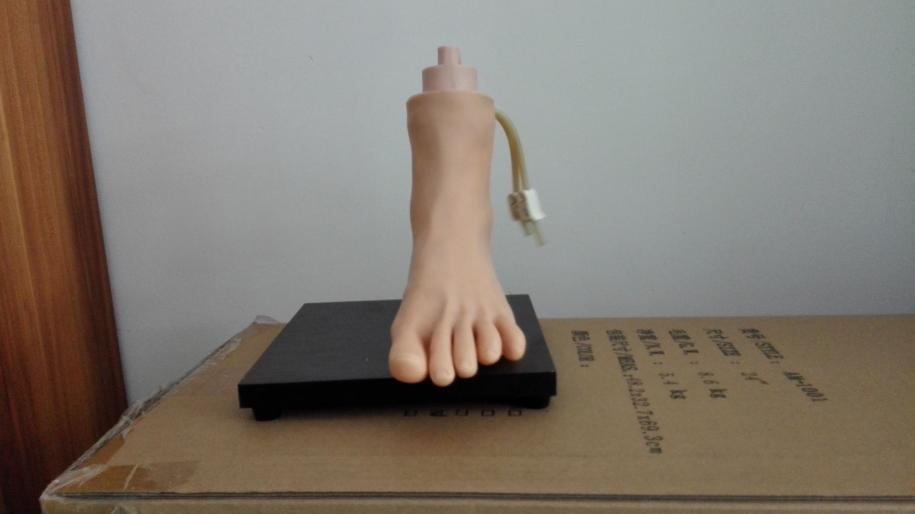

Article tag: foot intravenous injection simulation model| |
In the field of medical care, intravenous injection of lower limbs and feet is a vital technology, and the accuracy and proficiency of its operation are directly related to the patient's therapeutic effect and medical safety. In order t...
In the field of medical care, intravenous injection of lower limbs and feet is a vital technology, and the accuracy and proficiency of its operation are directly related to the patient's therapeutic effect and medical safety. In order to better improve the skill level of medical staff, the lower limb foot intravenous injection simulation model came into being and plays an increasingly important role in practice.

The lower limb and foot intravenous injection simulation model has become an important tool for medical staff to improve their intravenous injection skills due to its high degree of simulation and practicality. This model can accurately simulate the vein structure and blood vessel characteristics of the human lower limbs and feet, allowing medical staff to perform practical operations in a safe and controlled environment. Through repeated practice, medical staff can master the correct method of intravenous injection and improve the accuracy and efficiency of the operation.
In addition to improving skill levels, the lower extremity foot intravenous injection simulation model also has the effect of reducing medical risks. In actual operation, intravenous injection has certain risks due to individual differences and changes in condition of patients. Through model training, medical staff can become familiar with and master various possible situations and response methods without coming into contact with real patients, so that they can respond more calmly in actual operations and reduce the occurrence of medical errors and accidents.
With the continuous advancement of medical technology and changing medical needs, the simulation model of intravenous injection in the lower limbs and feet is constantly updated and improved. In the future, this model will pay more attention to the development of intelligence and personalization. By introducing advanced sensing technology and data analysis technology, the model can provide real-time feedback on the operation status of medical staff and provide targeted guidance and suggestions. At the same time, the model can also be personalized and adjusted according to the different levels and needs of medical staff to meet different levels of training needs.
In addition, the simulation model of intravenous injection in the lower limbs and feet also has broad application prospects in the field of scientific research. Through in-depth study of the model, the impact of different injection techniques and different drugs on injection effects can be explored, providing a more scientific basis for clinical practice. At the same time, the model can also be used to study the impact of individual patient differences on injection effects, providing more accurate data support for personalized medicine.
In summary, the application and development prospects of the lower limb and foot intravenous injection simulation model in the field of medical care are very broad. It can not only improve the skill level and operational efficiency of medical staff, but also reduce medical risks and promote scientific research progress. With the continuous innovation of technology and the continuous expansion of application scenarios, we have reason to believe that this model will play a more important role in the future and contribute more to the development of medical care.